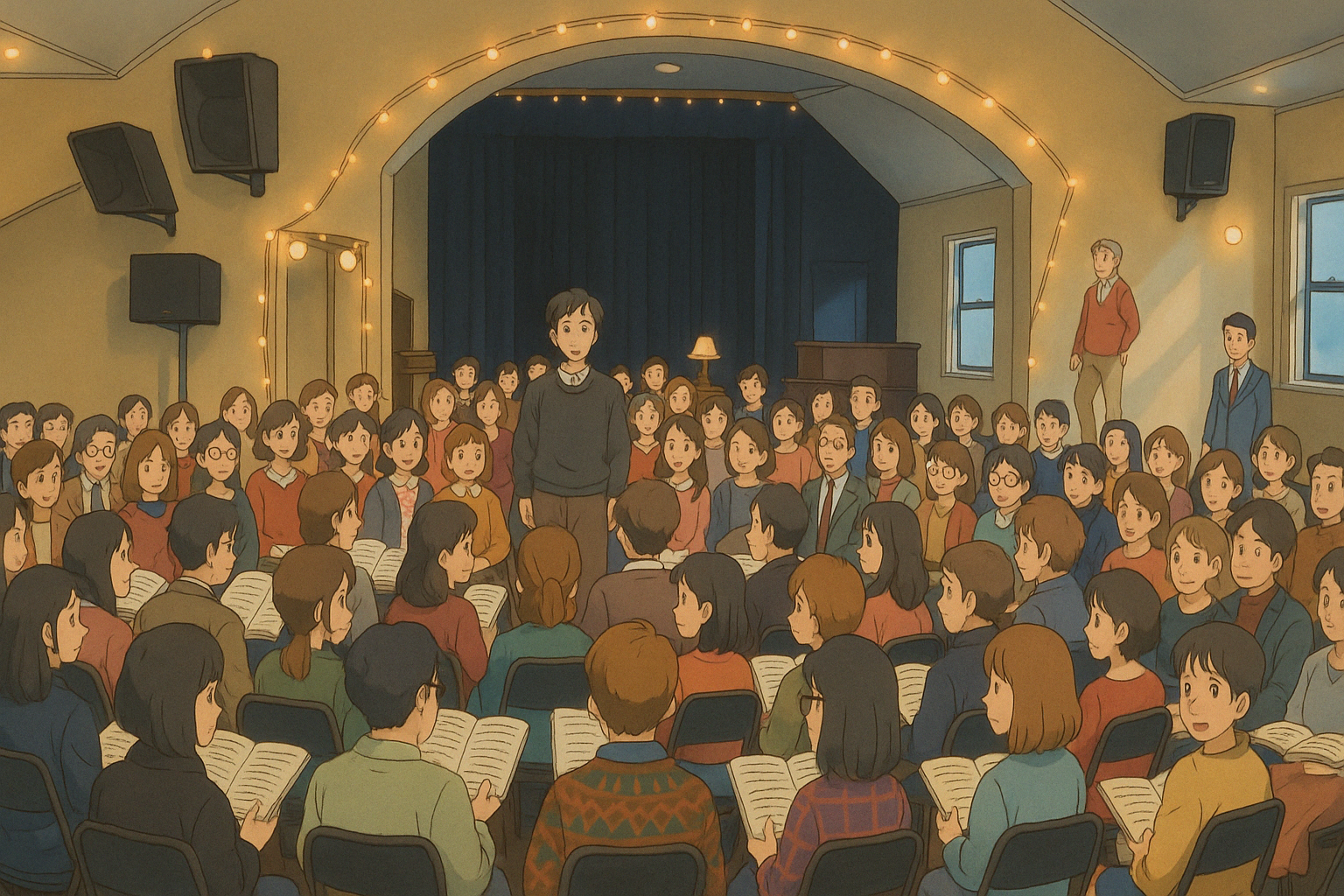A Hollow Square, Full of Life
On shape note singing, AI, and what fragile voices still hold
I’ve sung with a few groups over the years. Some well-oiled, some gloriously chaotic. Once or twice, I stepped into the hollow square.
Not because shape note singing is my thing. But because I was invited. And welcomed. And for a moment, I stood in a room where people sang not for each other, not at each other, but with each other. Loud. Imperfect. Committed.
It wasn’t polished.
It wasn’t easy.
And it wasn’t a performance.
In a world where everything is increasingly packaged, where we’re taught to speak like brands and sing like contestants and optimize our every utterance for approval, shape note singing felt like the opposite of that. It was rough around the edges. It was beautiful because of those edges. Because no one smoothed them out.
Over time, I’ve heard the complaints too—about singers who can’t hold a tune, about nobody stepping up to pitch, about the whole thing sounding a bit… off.
I get it. We’re a performance-minded culture. Expertise is currency.
But that’s the heresy of the square: off-key is a feature, not a bug.
The hollow square doesn’t promise transcendence.
It promises presence.
And in that presence, you feel something sacred that AI can’t replicate—not because it’s emotional or spiritual, but because it’s allowed to be human. Loudly, clumsily, vulnerably human.

I recently read a piece by Mary Margaret Alvarado in Image Journal, called “Shaped for People.” It’s a meditation, not a manifesto. Tender and unsparing. She writes about Sacred Harp singing in the age of AI—not to dismiss the technology, but to hold up a mirror. To remind us that there are still things worth doing together. Breath-filled things. Fragile, communal things.
“It is not perfect,” she writes. “It is not trained. It is not for sale.”
She attended the Helwig Memorial Singing. Steve Helwig, was a well-loved member of the West Coast shape note community—respected, present, part of the harmony. He spiraled into crisis and took his own life.
That fact—that reality—is like a dissonant chord that never resolves. But it belongs in the song. Because death is as human as it gets. And shape note doesn’t shy away from that. It makes room for it. It sings around it and with it.
Every singing is a kind of memorial. Not just for those who are gone, but for the impermanence of all of it. For the way memory frays. For the way bodies fail. For the way even the best singer will one day no longer be able to sing.
There’s no backup of Steve’s voice that can do what the memory of his presence in the room still does. That’s not anti-technology—it’s pro-human scale. It’s a refusal to flatten grief into data.
That’s why the square matters. It’s not a performance. It’s a rehearsal for being human.
That square didn’t convert me. But I carry its shape.
I’m not a shape note singer. Not really.
But I stepped into the square once.
And in doing so, I learned something that sticks with me even now, as I work with LLMs and teach machines to echo and augment my voice.
I learned that not all feedback feeds back.
Some just dissipates.
Some dies with the singer.
Some stays with those who heard it and loved them.
And some becomes a line in a blog post on a platform called ghost.io, sent out into the silence, hoping someone else remembers the shape too.
This still matters. Maybe you’ll step in, too.